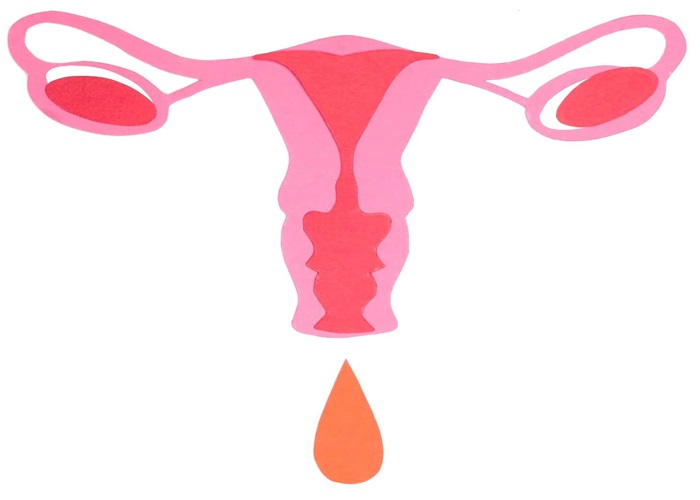Postmenopausal bleeding refers to any vaginal bleeding that occurs after a woman has gone through menopause. Menopause is defined as the absence of menstruation for 12 months. Postmenopausal bleeding can be a cause for concern, as it may be a sign of a serious underlying condition. In this article, we will explore the signs and symptoms of postmenopausal bleeding, how to avoid bleeding and treatment methods.
7 Common Signs Of Postmenopausal Bleeding
Vaginal bleeding: The most common sign of postmenopausal bleeding is vaginal bleeding that occurs after a woman has gone through menopause. The bleeding may be light or heavy and may last for a few days or several weeks.
Abnormal discharge: Women experiencing postmenopausal bleeding may also notice an abnormal vaginal discharge. The discharge may be watery, bloody, or have an unusual odor.
Pain or discomfort: Some women may experience pain or discomfort during intercourse or when inserting a tampon. This may be a sign of a vaginal or cervical condition that is causing the postmenopausal bleeding.
Pelvic pain: Women experiencing postmenopausal bleeding may also experience pelvic pain or discomfort. This may be a sign of a more serious condition, such as endometrial cancer.
Fatigue: Women experiencing postmenopausal bleeding may also experience fatigue or weakness. This may be a sign of anemia, which can occur as a result of heavy bleeding.
Mood changes: Women experiencing postmenopausal bleeding may also experience mood changes, such as depression or anxiety. This may be a result of the stress and anxiety associated with the condition.
How to avoid bleeding after menopause
Maintain a healthy weight: Being overweight or obese can increase the risk of hormonal imbalances, which can lead to bleeding after menopause. Maintaining a healthy weight through a balanced diet and regular exercise can help prevent these imbalances.
Stay hydrated: Drinking plenty of water can help prevent vaginal dryness, which can cause bleeding after menopause. Aim to drink at least 8 glasses of water per day.
Use lubricants: Using a water-based lubricant during sexual activity can help prevent vaginal dryness and reduce the risk of bleeding after menopause.
Avoid douching: Douching can disrupt the natural balance of bacteria in the vagina and increase the risk of infection, which can cause bleeding after menopause. Avoid douching and instead use mild soap and water to clean the genital area.
Quit smoking: Smoking can increase the risk of hormonal imbalances and decrease blood flow to the vagina, which can cause bleeding after menopause. Quitting smoking can help reduce these risks.
Manage stress: Stress can disrupt hormonal balance and increase the risk of bleeding after menopause. Practice stress-reducing techniques such as meditation, yoga, or deep breathing exercises.
Get regular check-ups: Regular check-ups with a healthcare provider can help detect any underlying medical conditions that may be causing bleeding after menopause. It’s important to schedule regular pelvic exams and mammograms as recommended by your healthcare provider.
Consider hormone therapy: Hormone therapy can help alleviate symptoms of menopause, including vaginal dryness and hormonal imbalances that can cause bleeding after menopause. However, hormone therapy comes with potential risks and should be discussed with a healthcare provider.
Treatment of postmenopausal bleeding
Hormone therapy: Hormone therapy (HT) involves taking estrogen and/or progesterone to help alleviate symptoms of menopause, including vaginal dryness and hormonal imbalances that can cause postmenopausal bleeding. HT can be given in the form of pills, patches, gels, or vaginal creams. However, HT comes with potential risks and should be discussed with a healthcare provider.
Non-hormonal medications: Non-hormonal medications, such as selective estrogen receptor modulators (SERMs) and aromatase inhibitors (AIs), can also be used to treat postmenopausal bleeding. SERMs work by blocking the effects of estrogen in certain tissues, while AIs work by blocking the production of estrogen in the body.
Endometrial ablation: Endometrial ablation is a procedure that involves removing the lining of the uterus to treat heavy or prolonged postmenopausal bleeding. This procedure can be done using various techniques, including laser, radiofrequency, or thermal energy.
Hysterectomy: Hysterectomy is a surgical procedure that involves removing the uterus and, in some cases, the ovaries. It is typically reserved for cases of postmenopausal bleeding that are caused by more serious conditions, such as endometrial cancer.
Dilation and curettage (D&C): D&C is a procedure that involves dilating the cervix and scraping the lining of the uterus to remove any abnormal tissue. It can be used to diagnose and treat postmenopausal bleeding.
Chemotherapy and radiation therapy: Chemotherapy and radiation therapy may be used to treat postmenopausal bleeding that is caused by cancer.
Lifestyle changes: Making lifestyle changes, such as maintaining a healthy weight, quitting smoking, and reducing stress, can help improve hormonal balance and reduce the risk of postmenopausal bleeding.
Conclusion
Postmenopausal bleeding can be a cause for concern, as it may be a sign of a serious underlying condition. Vaginal bleeding, abnormal discharge, pain or discomfort, pelvic pain, fatigue, and mood changes are all common signs and symptoms of postmenopausal bleeding. Women who experience postmenopausal bleeding should consult with their healthcare provider to determine the underlying cause and receive appropriate treatment. Early detection and treatment of postmenopausal bleeding can help improve outcomes and prevent serious complications.
Related topics:


